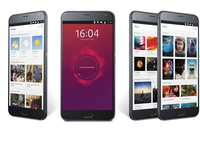Pro Phone
Meizu is well known for its generously equipped smartphones and excellent workmanship. The previous generation, Meizu MX4, was also a powerful device that ran with Ubuntu. However, inadequate software support prevented the MX4 from realizing its full potential. With the release of the Pro 5, do things work better this time around?
Meizu has come back for a second round with an Ubuntu-edition smartphone. The company has released the Meizu Pro 5 [1] as a new Ubuntu edition of its Android smartphone, just like it did with its predecessor, the Meizu MX4 Ubuntu Edition. The appearance of the new phone raises a big question: Has Meizu learned from its mistakes with the MX4?
The workmanship on the Pro 5 is excellent and absolutely exceptional for a device in this price category. The case is of a high quality, robust aluminum. At either end, plastic caps finish off where the antenna appear to be located. The camera lens extends out a good bit. The SIM card slot is located on the left edge, with volume controls and the power button located on the right side.
Generally, everything looks great. The Pro 5 feels good to hold. The SIM card tray can accommodate either a SIM card and an SD card or two SIM cards. While the Pro 5 with Android comes in various colors, the Pro 5 Ubuntu Edition is only available in red-gold. Whether a user finds this particular color pleasing is a matter of individual taste (Figure 1).
[...]
Use Express-Checkout link below to read the full article (PDF).
